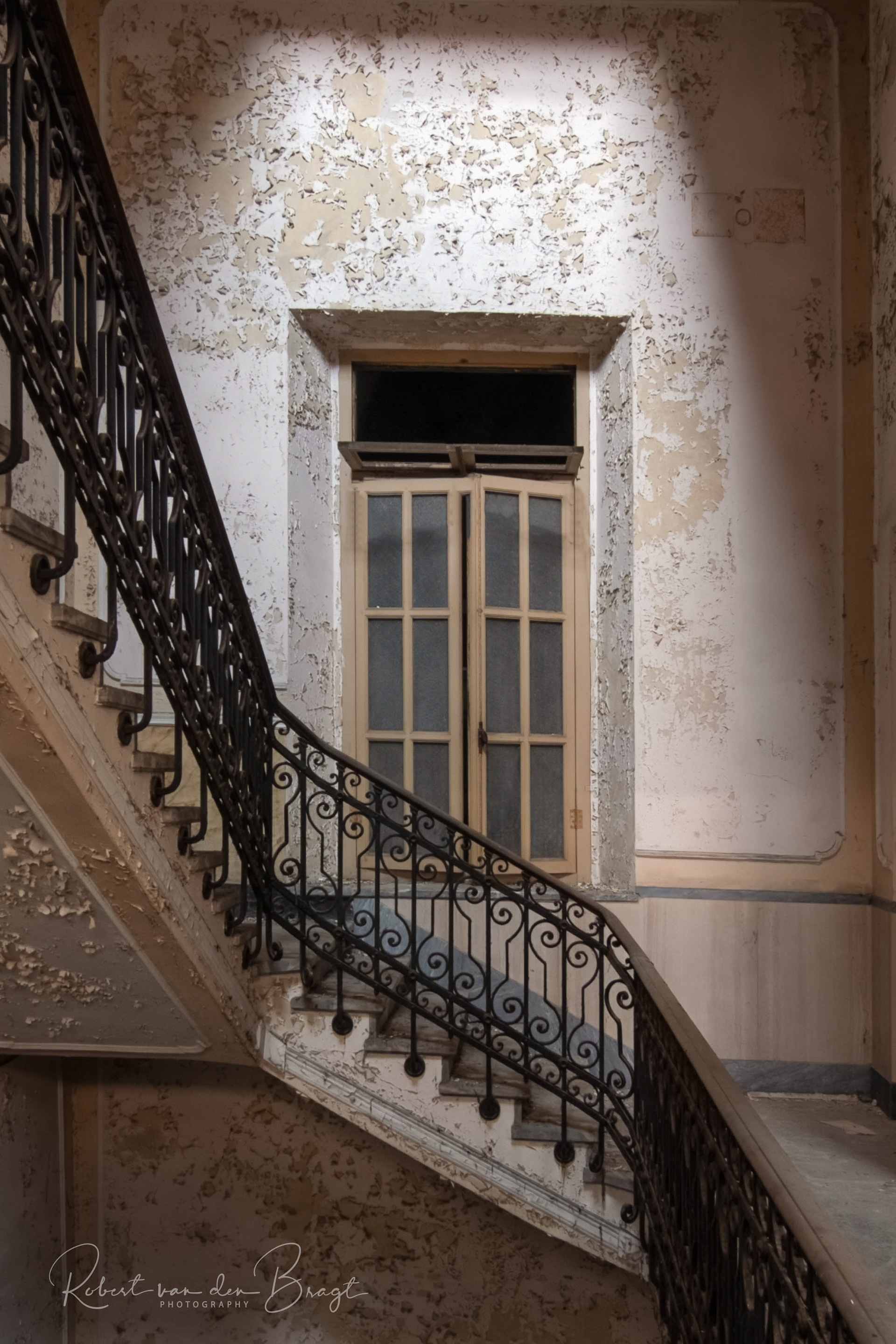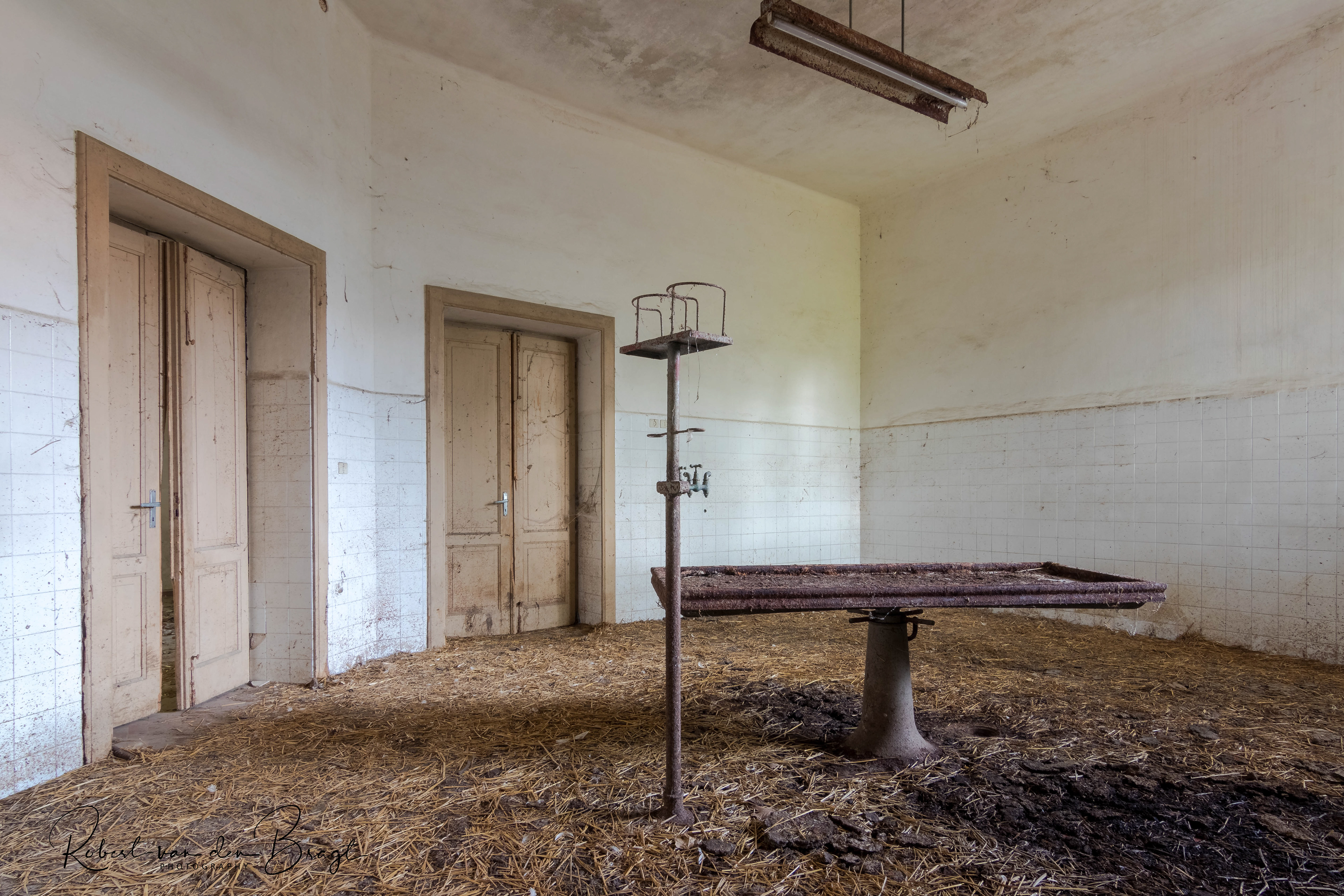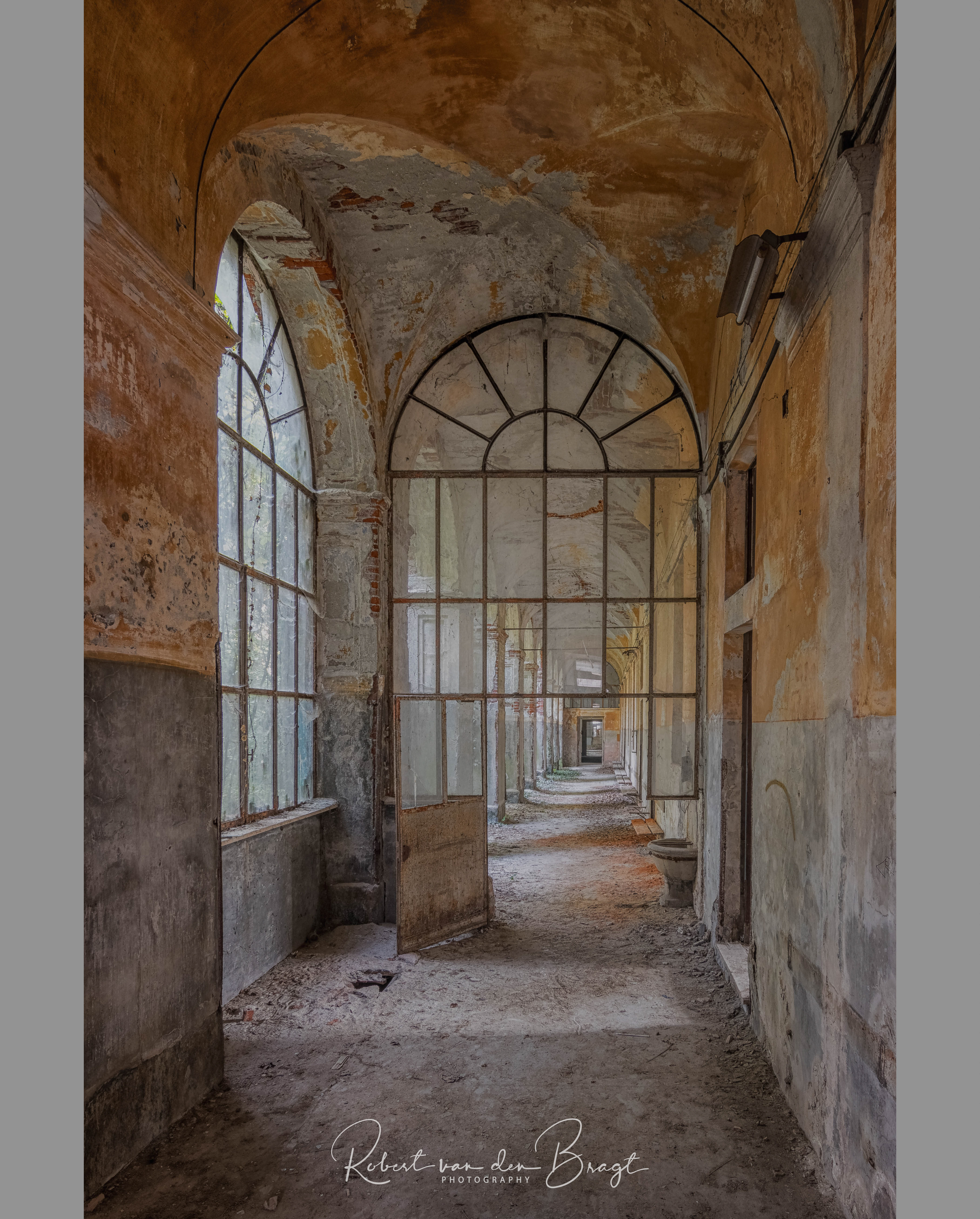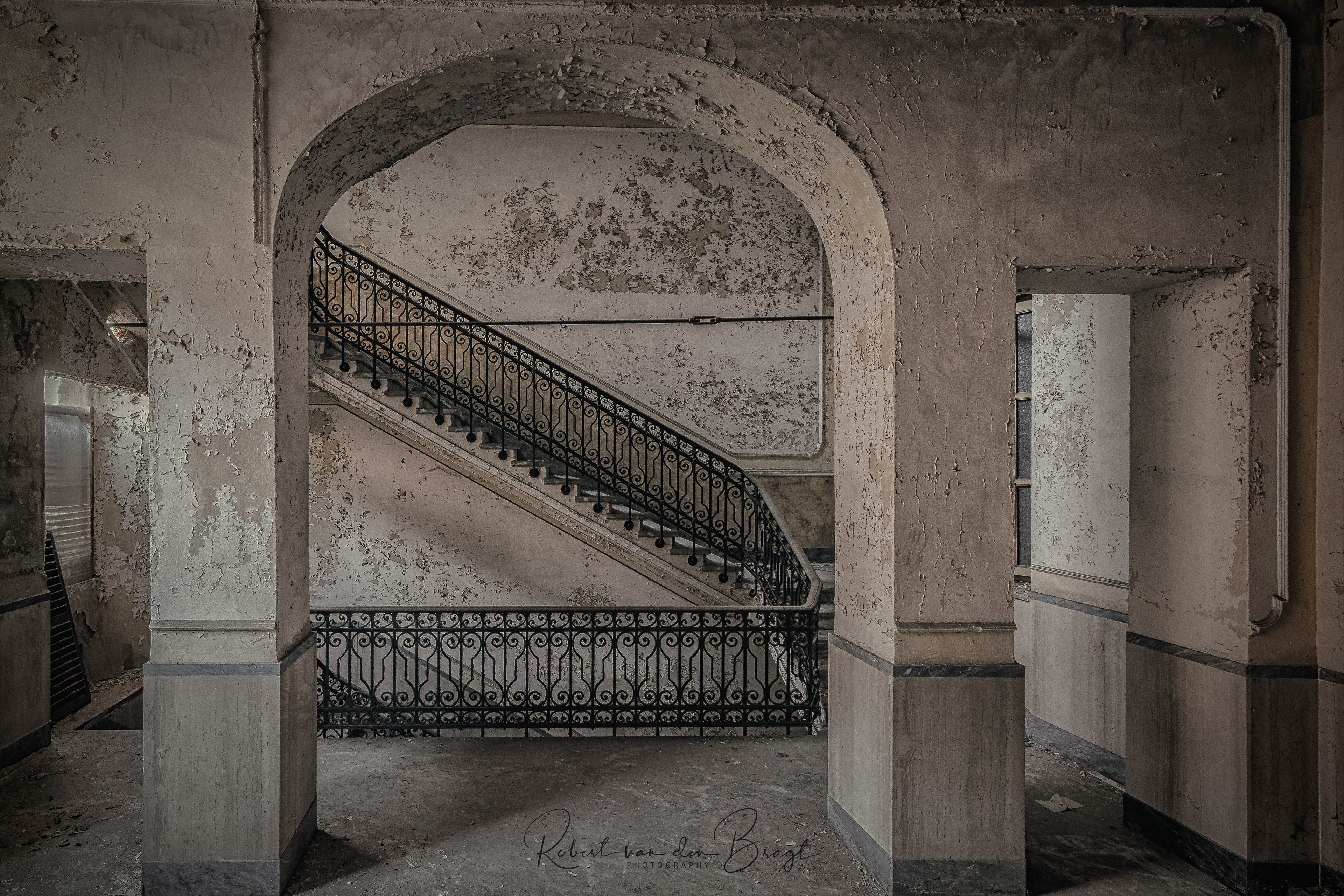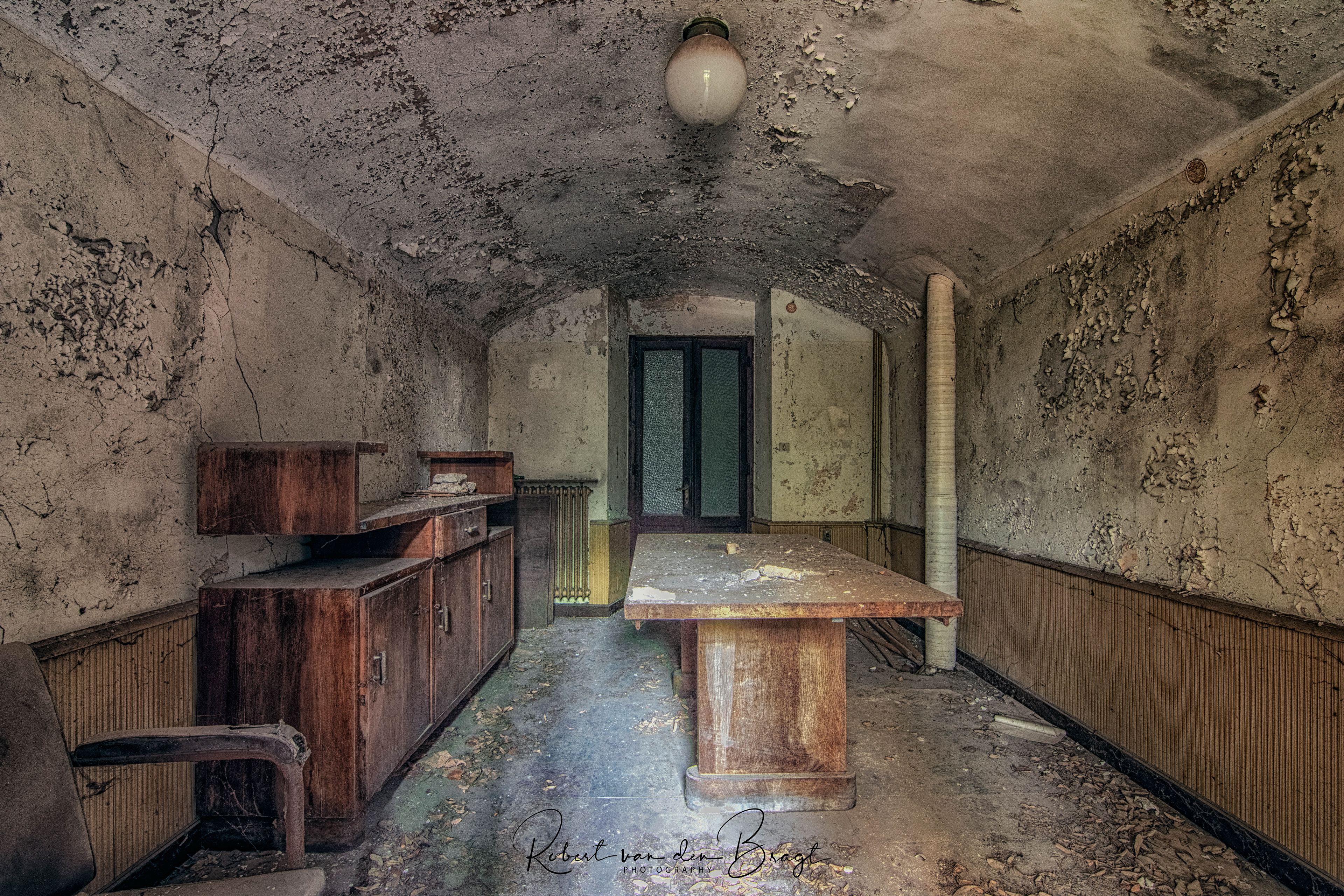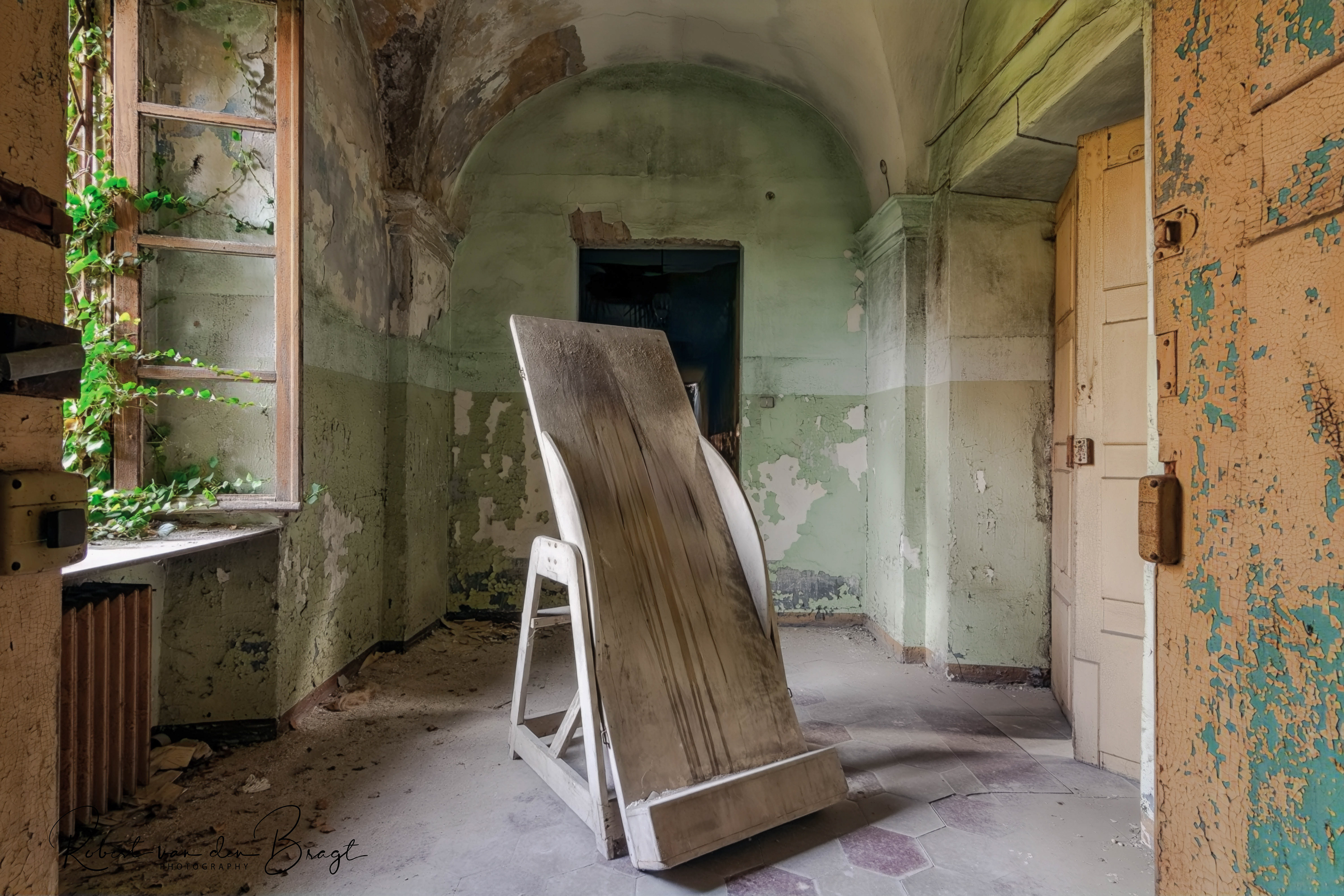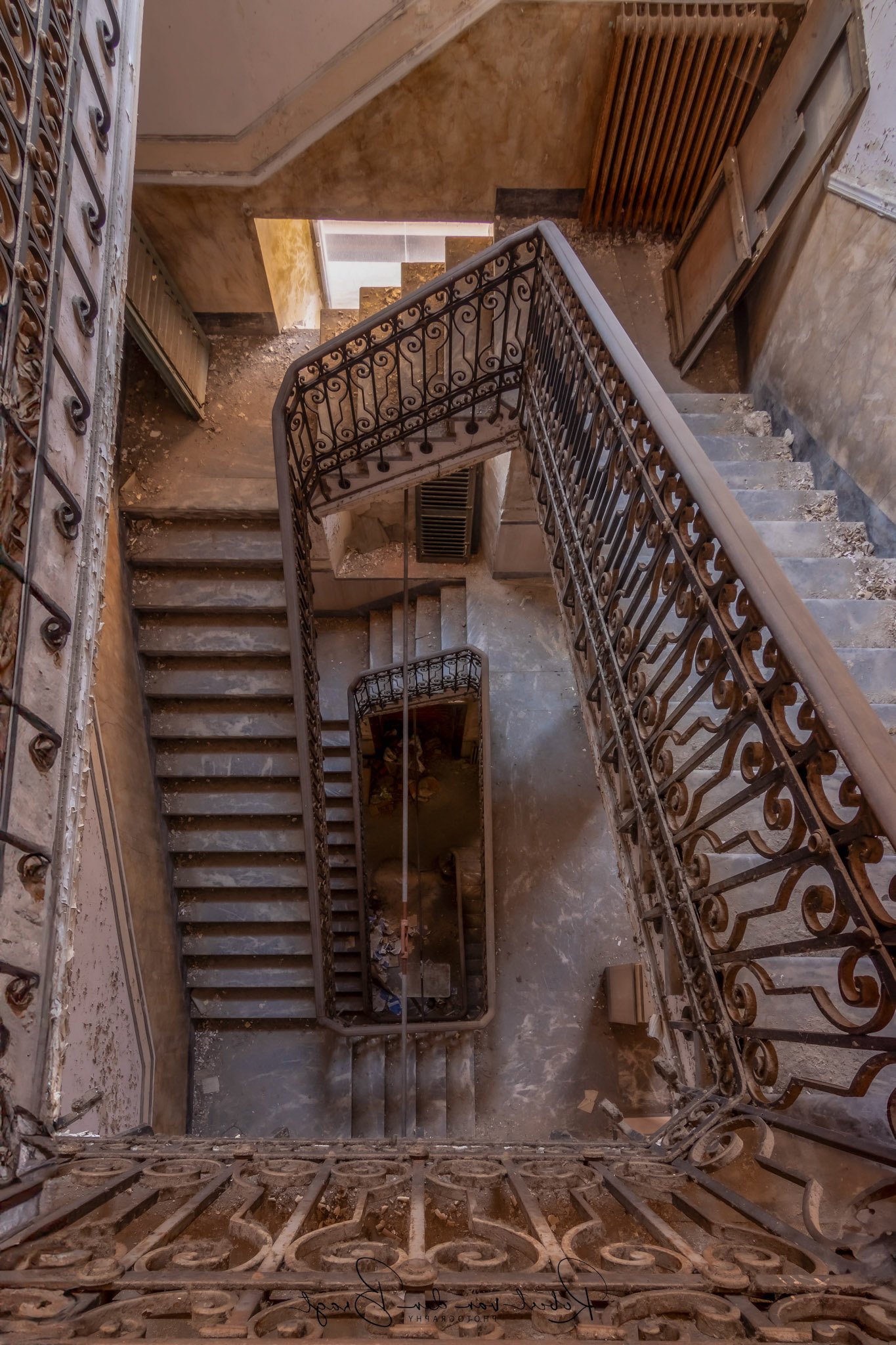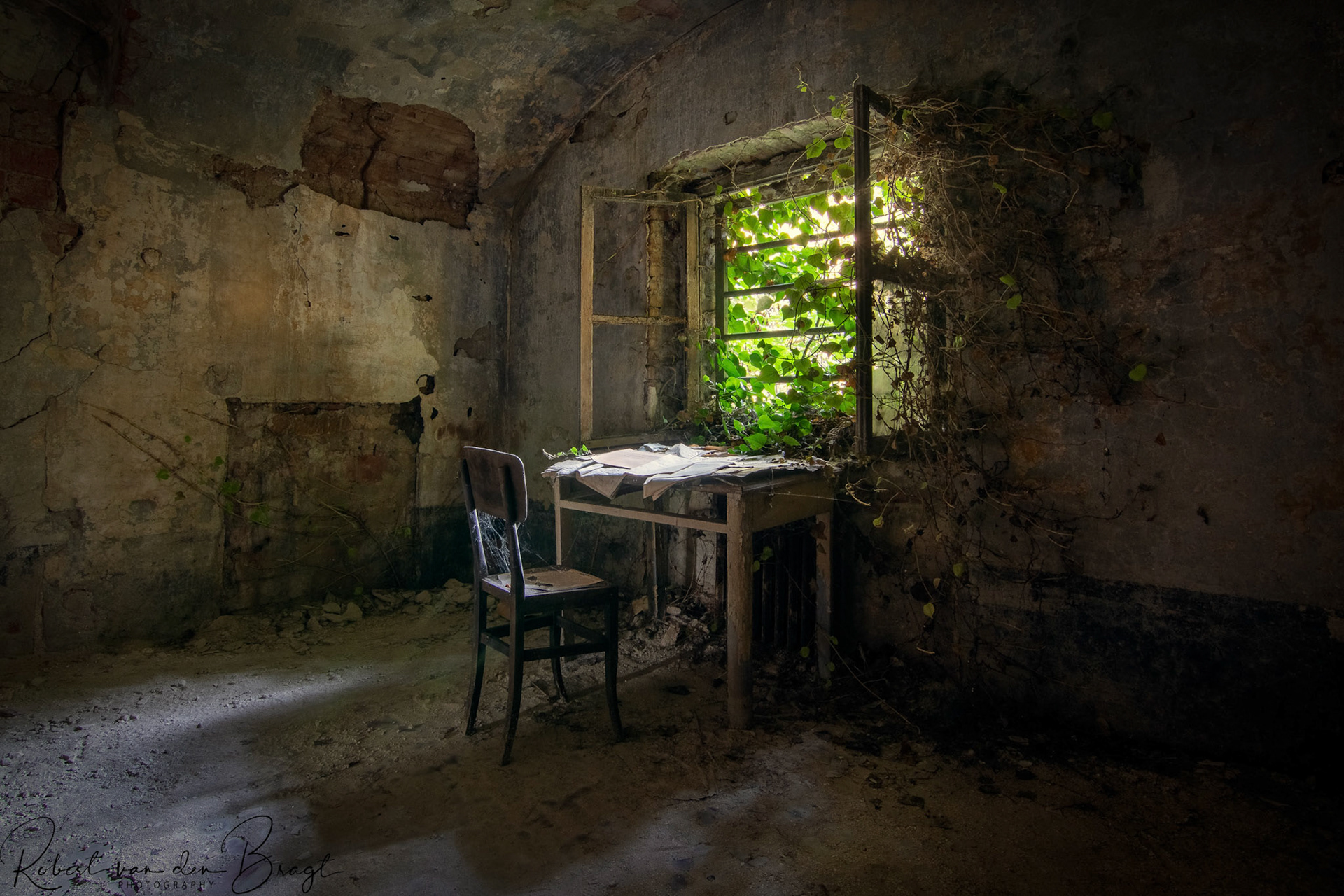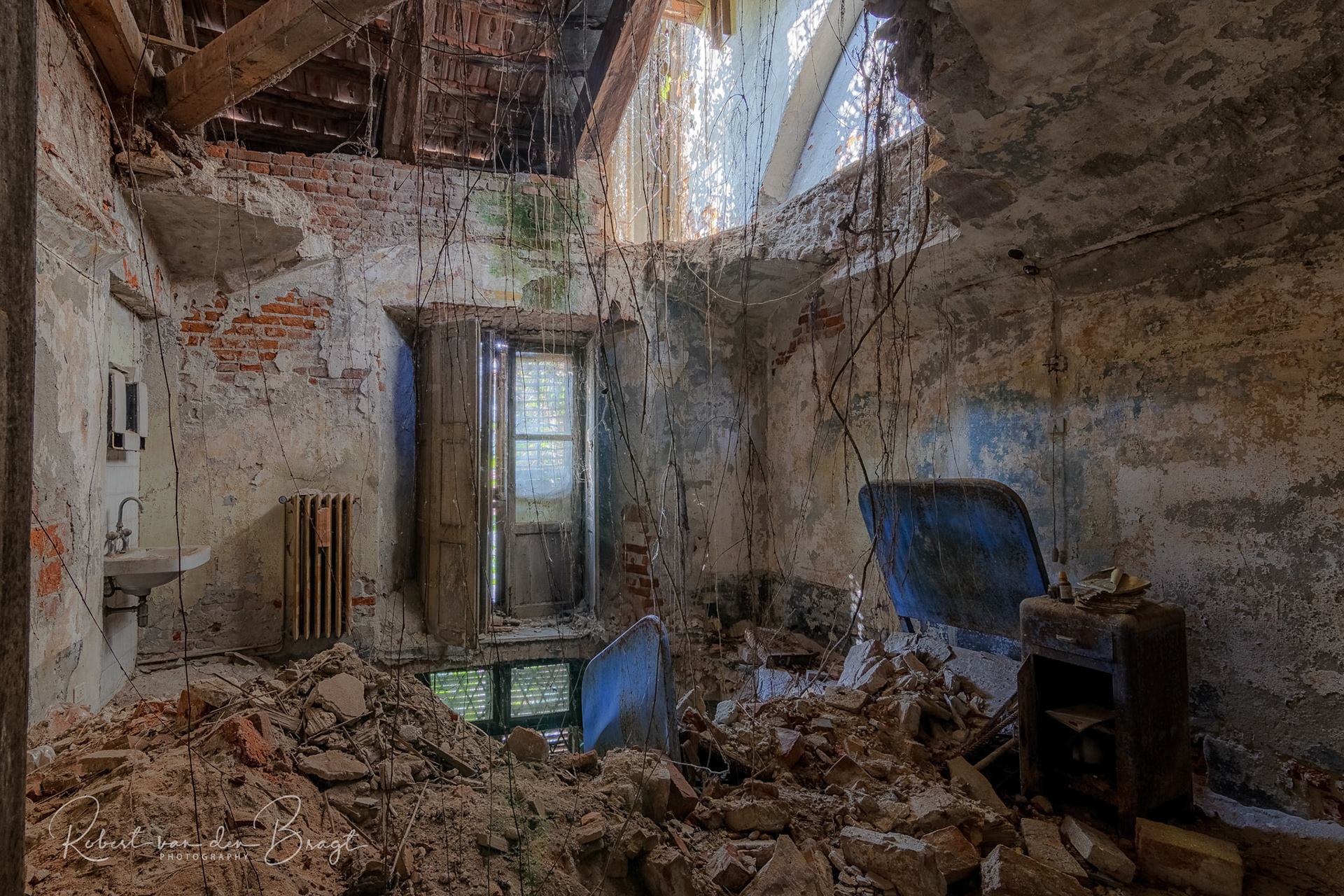HISTORY OF MANICOMIO DI R
This hospital opened in the 1870’s. The complex was built on the site of a former military college. The college had previously been a charitable hospital for those living in poverty. A year after opening, the institution housed 230 patients, rising to 400 near the end of the 19th Century.
The medical facility housed the “mentecatti“. It meant “half-wit” or “imbecile”; the language used is a clear reflection of a darker time in medical history for those with psychiatric or neurological disorders. Manicomio di R catered for a wide range of patients. These ranged from dangerously violent maladies, to patients suffering from dementia. In the early days of operation, there was little to no segregation of this wide spectrum of patients.
In the early 20th century changes in Italian law caused a reorganisation within the hospital. A new law stated that “dangerous madmen” had to be interred separately. Once again the hospital underwent expansion. The hospital was now able to accommodate 600 patients.
Further changes in Italian law pertaining to treatment facilities and segregating of male and female patients drove further expansion in the 1950’s and 1970’s. At this time the hospital had eight departments spread over several large pavilions. The sprawling site now covered 10 thousand square meters and including a large enclosed park. The quiet men (“Marro”) and quiet women (“Tamburini”) were now housed in separate pavilions. Conversely, the dangerous or “acute” patients resided in a ward with separate containment cells. The new and improved departments now included; a clinical research laboratory, radiology suite, electrotherapy treatment rooms, dentists office and an operating room. There was also an on-site chapel.
Further changes in Italian law pertaining to treatment facilities and segregating of male and female patients drove further expansion in the 1950’s and 1970’s. At this time the hospital had eight departments spread over several large pavilions. The sprawling site now covered 10 thousand square meters and including a large enclosed park. The quiet men (“Marro”) and quiet women (“Tamburini”) were now housed in separate pavilions. Conversely, the dangerous or “acute” patients resided in a ward with separate containment cells. The new and improved departments now included; a clinical research laboratory, radiology suite, electrotherapy treatment rooms, dentists office and an operating room. There was also an on-site chapel.
CLOSURE OF THE HOSPITAL
Finally, the Italian national health system was introduced in the 1980s. The new laws abolished the archaic asylums. This signalled the end of these traditional “madhouses”. Manicomio di R joined the other medical relics all over Italy in closure. There were around 900 patients when the laws decreeing closure of all “madhouses” were passed.
The decaying remnants of these ancient institutes still little the Italian countryside. A sombre reminder of a darker time in medical history.
